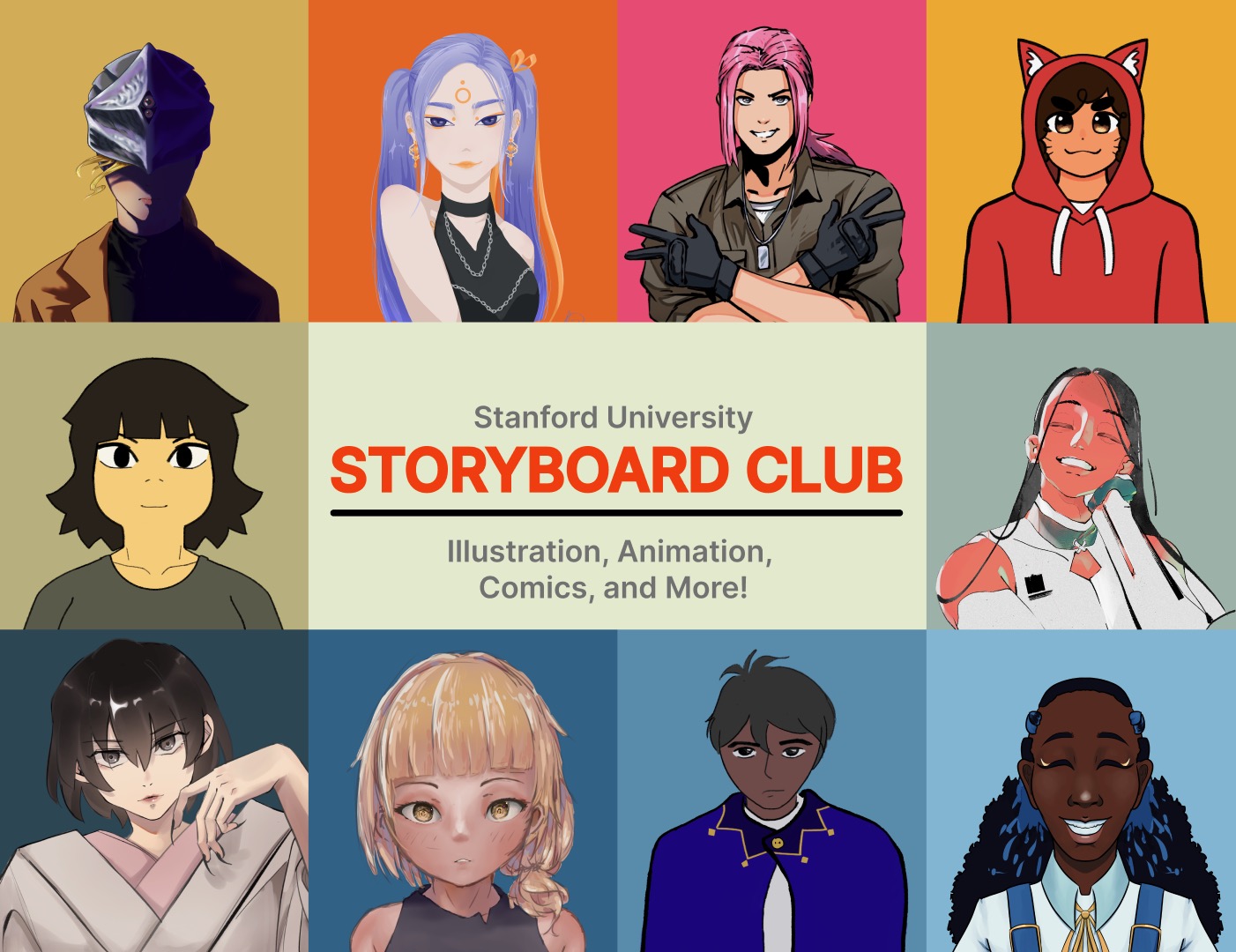Jess Lee ‘23 is an art practice major whose work centers around drawing, illustrations and painting. Lee also shares her passion for digital art through the Stanford Storyboard Club. The club provides students with an opportunity to learn illustration skills and character design, and gives students the space to learn more about the entertainment arts industry. Most recently, members had the opportunity to learn how to make stickers and even sold their creations at the SunSet Fest.
The Stanford Daily sat down with Lee, who is the co-president of the Storyboard Club, to learn more about her journey in digital art and how the club helps teach students about the entertainment arts industry.
This interview has been lightly edited for clarity.
The Stanford Daily [TSD]: Can you tell me about how you initially became interested in digital art?
Jess Lee [JL]: Initially, here at Stanford, I was a premed and then a CS major. I didn’t really have an art major on my mind at that time. I was part of the 2020 Chappell Lougee cohort. I proposed a game arts project, and spent the entire summer doing art. I learned to like art more and during that year, I picked up digital art and started practicing, posting drawings and getting better over time.
[TSD]: What types of activities and support can students expect from Storyboard Club?
[JL]: We do lectures and arts events. We bring in guest speakers, create stickers and do a lot of illustration. Less fine arts — it’s more focused on artwork for the entertainment industry. Before it was more about comics and drawing, but nowadays, it’s character design, backgrounds, game development, TV animation skills.
[TSD]: What has been an aspect of the storyboard club you enjoy?
[JL]: It’s been really nice being a part of the community. The community is very welcoming, and accepting of any kind of story that you want to tell with any kind of art that you do. We did a sticker-making workshop where a lot of students made their own custom stickers, and then we sold them at the SunSet Fest. So if you’re interested in creating art or selling your art, definitely reach out — we can connect you with resources that can get you started.
[TSD]: Was it hard to find a community before you joined? Especially for students who are interested in the art entertainment industry?
[JL]: In my freshman and sophomore years, definitely less community. Students were still doing it, but all individually; no one really knew each other. Nowadays, it’s a lot easier to find that group of people. There’s definitely a stronger need for that. From the school itself, there’s still not as much support. The art department doesn’t specialize in industry work. It’s more for fine arts and galleries. So you don’t get a lot of classes that specifically teach you things for an entertainment arts portfolio.
[TSD]: What kind of advice would you give students who want to get involved with the storyboard club?
[JL]: Reach out to the Storyboard Club! It is the community you want to go to if you’re interested in doing art for the entertainment industry. We encourage students to develop their own personal portfolio project over the course of the year, so you have your own creative project that you can put in a portfolio if you want to apply to internships.
